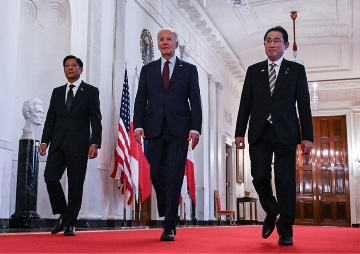Cooperation between India and Bangladesh in combating human trafficking has been encouraging; however, there is a need for a sustained improvement following the involvement of an organised criminal network that constantly changes their modus operandi.
This has been the viewpoint of experts who discussed the issue on 20 April, during a brainstorming session on “Combating cross-border human trafficking -- deepening India and Bangladesh cooperation”, organised by ORF. The research team of the Justice and Care, a non-governmental organisation working in this field, made the theme presentation. Pinak Ranjan Chakravarty, Distinguished Fellow, ORF and a former Indian High Commissioner to Bangladesh, chaired the meeting.
Expressing concern over the incidence of a large number of human trafficking cases at the India-Bangladesh border, including that of women and children, experts said there is a need for enhancing awareness about the challenges it poses among the stakeholders. The issue of human trafficking was often confused with the issue of illegal migration. Victims of trafficking are often mistaken as illegal migrants and tried under the laws concerning it. There is a need for nuanced understanding of human trafficking and migration.
A participant said that India is both a destination and a transit for the victims of human trafficking. Large sections of the victims are from Bangladesh. The participant further added that women and children are also trafficked from India to Bangladesh and further sent to gulf countries. Normally, victims are from poor families who often fall for the promise of a better life across the border.
Pointing to the porous border between India and Bangladesh, participants opined that this feature of the border has had helped in the thriving of this cross-border crime. The porous nature of the border makes its management difficult and the criminal networks take advantage of this feature of the border. Considering the cross-border nature of the crime, the participants were unequivocal about the need for joint action between India and Bangladesh to control the crime.
Appreciating the governments of India and Bangladesh on the signing of the memorandum of understanding on the bilateral cooperation for prevention of human trafficking in women and children: rescue, recovery, repatriation and reintegration of victims of human trafficking, the participants noted that there is willingness on the part of the authorities to address the issues.
Reviewing the state of bilateral cooperation, the participants of the two countries have made significant progress in strengthening cooperation. Listing some of the developments in the area, like the signing of the bilateral mutual legal assistance treaty and the extradition treaty, participants said these treaties had been a landmark. They also expressed their satisfaction with the steps taken by the two governments in enhancing border management cooperation.
The meeting expressed anguish that despite all the positive developments, the problem of trafficking is still continuing between India and Bangladesh. The cross-border criminal networks remain active. A participant, however, felt that human trafficking is a social disease and needs to be controlled. Prosecution of the perpetrators of the crimes is a major deterrent. But the prosecution rates are very low and hardly effective. Another problem that stands in the way of prosecution has been the complex bureaucratic process that often hampers the exchange of information and evidence documents to prove the crime.
The complex bureaucratic processes also act as a hindrance to the repatriation of the victims. Victims have to languish in the shelter homes for years because of these bureaucratic delays. Simplifying the bureaucratic process for the repatriation of the victims is very essential. The meeting suggested use of modern technology in order to institutionalise speedy repatriation process, and also for investigation.
The following are some of the recommendations suggested by the meeting:
- Implementation of the provisions of the MLAT in its letter and spirit.
- Training of border security agencies and law enforcement agencies for raising awareness.
- Institutionalising a mechanism that would ensure better coordination among the border guarding forces and law enforcement agencies -- both in India and Bangladesh.
- Increasing the frequency of meetings of the Joint Task Force on India and Bangladesh.
- Dissemination of the decisions of the meeting to all stakeholders.
- Formalising use of modern technology for speeding up the repatriation and investigation.
- Establishment of a cross-border joint response team and arranging allocation of finances for ensuring the smooth functioning of the team.
- The need for vulnerability mapping for identifying the major corridors.
The participants of the brainstorming session included scholars and professionals of border management, members of the non-governmental organisation, legal practitioners, former diplomats, representatives from UN agencies and other organisations.
This report is prepared by Joyeeta Bhattacharjee, Senior Fellow, and Jhoomar Mahta, Researcher, Observer Research Foundation, Delhi
The views expressed above belong to the author(s). ORF research and analyses now available on Telegram! Click here to access our curated content — blogs, longforms and interviews.




 PREV
PREV

